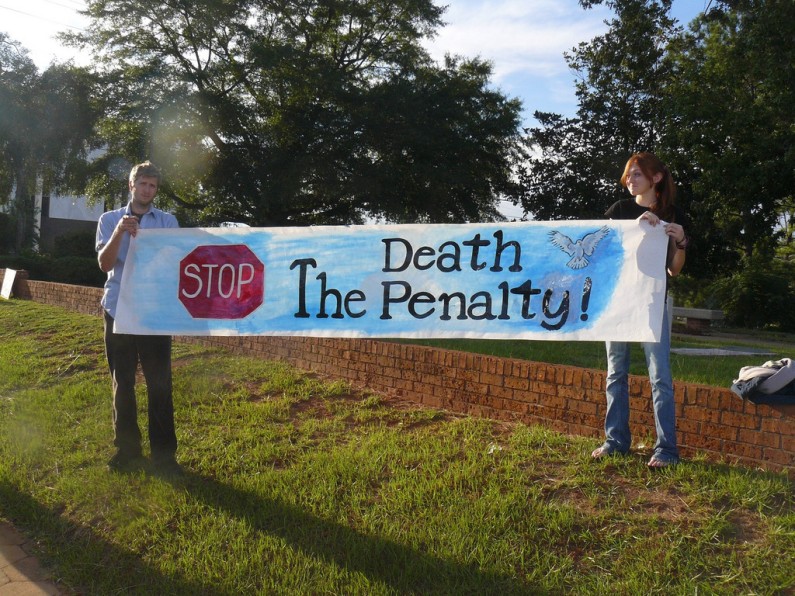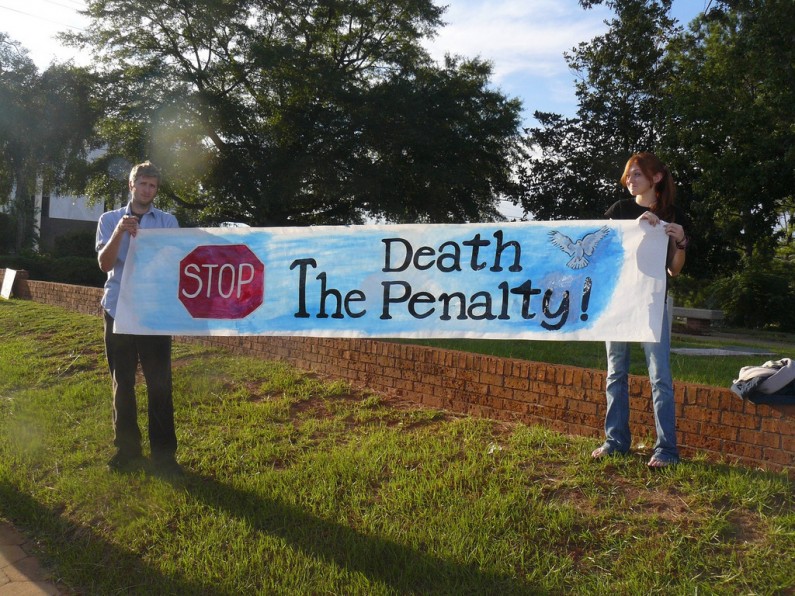

The death penalty has been controversial since its inception – making news headlines regularly over society’s debate concerning the punishment’s legal, moral, and ethical standing in America’s criminal justice system. Over this past year, botched executions in Ohio and Arizona have put the brakes on executions in those states and others. Never ending, the controversy over the death penalty has taken a new twist. From botched executions – to now, death penalty opponents being accused of framing an innocent man in order to free another on death row. It appears that both camps have simultaneously gone off the deep end of reason, means and justification for their respective positions on the death penalty – rendering both sides’ posturing ineffective as a solution.
Death penalty opponents have committed the same act that they condemn as immoral – they actually set up an innocent man and escorted him to death row. Alstory Simon was released on October 31, 2014, after he had spent 15 years in prison for confessing on videotape to a 1982 double murder in Chicago. Simon’s non-Mirandized confession was obtained – not by the police, but to a private investigator for Northwestern University’s Medill Innocence Project. Medill employees also manufactured false evidence against Simon and induced his confession with his vindictive ex-wife’s incriminating statement and a video statement made by a supposed witness of the murder – an actor. Most egregious, Medill arranged to have Simon represented by a free criminal defense attorney who was a friend of the organization and had knowledge of Medill’s plan to free Porter. Simon’s guilt beyond a reasonable doubt was sewn up by Medill in a nice package covering all the bases within America’s criminal justice system – and, the state bought it hook line and sinker.
As a result of his illicitly obtained confession, Simon was arrested, convicted, and sentenced to the death penalty – courtesy of Medill. In turn, another innocent man on death row was released for a crime which he also did not commit – all in the glorified press coverage of Medill – eventually leading to the moratorium on Illinois’ death penalty enforcement by then Governor Ryan. The Cook County State’s Attorney’s Office conducted an investigation concerning Medill’s charade of evidence against Simon and vacated his conviction – ending his 37-year sentence. Both Porter and Simon are the poster children for just how immoral, unjust, and corrupt America’s criminal justice system has become.
Lethal injection seemingly appears to be yet another failed method of execution by states seeking to enforce their death penalty statutes. Not only is the compounded drug obviously inefficient and ineffective – the state personnel who attempt to carry out the lethal injection ceremony, before gawking crowds and the press, are obviously incompetent. In April, a death row inmate in Ohio was injected with a compounded drug and did not die for 26 minutes while gasping and snorting. In July, it took almost two hours for an Arizona death row inmate to die after receiving 15 doses of the lethal compound. Kentucky state officials have decided to forego its proposed use of the two drug compound execution method – modeled after Ohio’s method – because of the botched executions in Ohio and Arizona.
Adding to concern from courts reviewing the constitutionality of lethal injections is the fact that the drugs needed to carry out executions by such method are difficult for the states to obtain because the manufacturers of these drugs insist on anonymity. These drug manufactures to not want to be known for their complicity with the death penalty – either based upon their moral opposition to capital punishment and/or they are basically hiding from capital punishment opponents and their anticipated wrath upon these business’s reputations.
Executions in the U.S. have been on the slowest pace in terms of actual performance over the last two decades. The Death Penalty Information Center (2014) reports 39 executions in the U.S. in 2013 – in 2014, the number of executions is expected to be the lowest number since 1994. This slow movement appears to reflect a lack of motivation by states to carry out their death penalty statutes.
Blog By Anita McNeal
Image courtesy of Kurt and Sybilla – Flickr License


